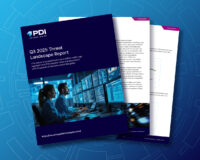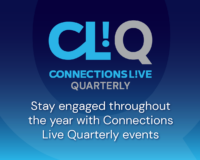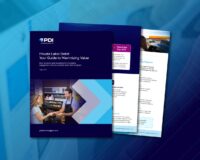
It’s been nearly 300 day since officials confirmed the first case of COVID-19 in the U.S. In that time, the country has undergone shutdowns, reopenings, and everything in between as the government and health experts have grappled with how best to combat the novel coronavirus.
PDI’s recently released 2020 Road to Rewards Report surveyed U.S.-based consumers, convenience retailers and decision-makers who work for retailers, grocers or consumer packaged goods (CPG) brands at the peak of the pandemic in May 2020. Here are five takeaways about how the pandemic impacted consumer preferences and what businesses can do to pivot their loyalty programs during an unprecedented year of change.
Loyalty is still valuable during a pandemic
Loyalty is one of the most effective tools to drive profitable customer behavior, and increasingly more businesses are seeing its value in helping them accomplish their goals, even during a pandemic. According to the report, the majority of decision-makers surveyed (95 percent) said their company had a loyalty program. But simply having a loyalty program isn’t enough to guarantee results. A loyalty program has to be intentionally designed and executed to achieve the desired outcome—a fact many respondents seemed to grasp. This year, 40 percent of business decision-makers stated their loyalty programs have the primary goal of changing customer shopping behavior in a variety of ways, including increasing the frequency of store visits.
Perhaps one of the most important lessons businesses are learning is the need to combine loyalty with enhancements to the overall customer experience. This is particularly critical during times of prolonged disruption that change consumer expectations. After the pandemic subsides, many decision-makers said they plan to implement things like mobile apps, cashierless checkout and more.
Fuel savings are a critical component to a successful loyalty program
From the time we began publishing the Road to Rewards Report five years ago, fuel savings has ranked as the most preferred reward among consumers. At the height of the pandemic back in April and May, fuel demand plummeted as shelter-in-place restrictions went into effect and driving decreased. The result was a change in consumers’ perception of fuel savings as a reward. Consequently, its popularity temporarily declined.
But here’s why fuel savings is still important for your loyalty program. A majority of consumers surveyed still belong to a loyalty program that offers fuel savings. In addition, 35 percent ranked low gas prices in the top three when listing what was important to a good convenience store experience. But perhaps the most valuable aspect of fuel savings members is they engage more frequently with their favorite loyalty programs than any other any other loyalty member categories.
Keep it simple and flexible
One of the major takeaways from this year’s Road to Rewards Report was that consumers value flexibility in their loyalty programs, including the ways they earn and redeem. In fact, only a few percentage points separated the top five most popular types of loyalty programs among the 96 percent of consumers who were earning with one or more programs.
For example, a loyalty program entirely dependent on fuel savings as a rewards currency may not have been as appealing as a program with broader redemption options. Programs that included fuel savings and other savings types allowed consumers to continue the engaging with retailers and brands throughout the pandemic. As people return to work and travel increases, we are already seeing fuel volumes return to normal, meaning consumers will begin using their fuel savings rewards again. By having multiple savings types, these consumers never stop engaging.
Even retailers that don’t sell fuel can take advantage of the value of this reward by participating in a coalition program and allowing consumers to shop and earn with various brands. The lesson here is that choice, balance, flexibility and simplicity in a loyalty program are the keys to long-term success.
Offer valuable rewards
Offering consumers the rewards they value goes a long way in encouraging loyalty program participation that keeps customers coming back. When asked, most decision-makers said they were offering members-only promotions and offers. Here’s the problem. According to the data, it’s one of the least preferred reward types by consumers.
Offering the wrong rewards can cripple a loyalty program, hinder customer retention efforts and potentially cost retailers and CPGs revenue. Over half of loyalty members surveyed said they would switch brands or shop at a different store if they could earn more valuable rewards. That number was even higher for fuel savings members. Taking the time and doing the research to get your rewards right is a worthwhile investment.
Personalization provides a pathway to consumer loyalty
Like rewards, personalization goes a long way in helping a business profitably change consumer behavior. More importantly, customers now expect it. Investing in the tools that deliver valuable insights into the customer data you collect through your loyalty program can help you customize promotional offers and communications for your shoppers. Personalization is the best way to ensure your loyalty program remains relevant to new and longtime members.
So, start doing the necessary work to improve your loyalty program’s value and convenience. Enhancing the customer experience as well as adding flexibility, valuable rewards and personalized offers/promotions to your loyalty mix will help increase revenue at every stage of the customer journey.
You can thrive in today’s digital economy. Contact us today to learn how we can help you transform your business.



